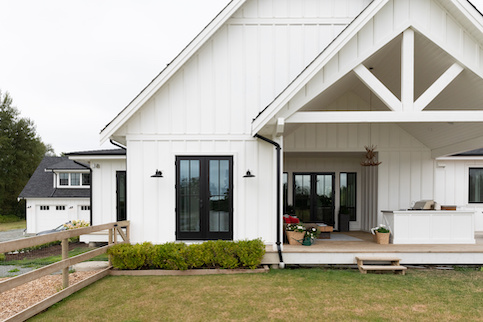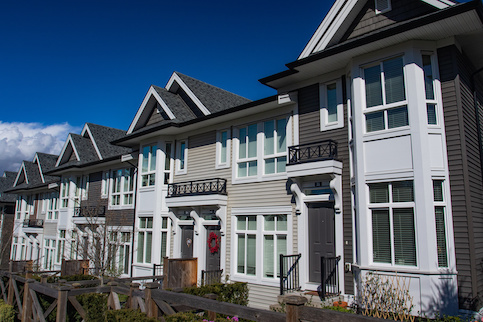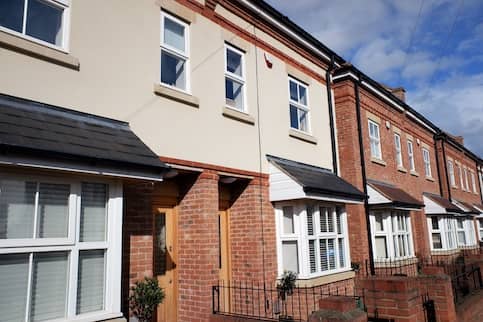A home equity line of credit can let you borrow the equity you’ve built in an investment property, which you can use to renovate it, invest in another property, or pretty much do anything else you’d like. Getting a HELOC on an investment property is similar to getting one on your primary residence, but most lenders will set stricter requirements you’ll need to meet. Here’s what you need to know.
Key Takeaways:
- A HELOC for investment properties allows you to borrow cash against the equity you’ve built up in real estate you own.
- Lenders typically set stricter standards for HELOCs on investment properties versus HELOCs for primary residences.
- Payments on a HELOC are in addition to your primary mortgage payment, so you need to be sure you can afford them, as defaulting on the loan may lead to foreclosure.
What Is An Investment Property HELOC?
An investment property HELOC is a way to borrow money as needed using the property’s equity as collateral.
As with a HELOC on your primary residence, you’ll have ongoing access to a credit line that matches the equity you can borrow. The draw period is when you can draw on the credit line, and you usually have to make interest-only payments. After the draw period ends, you can no longer draw on the credit line, and you’ll begin making monthly payments on the interest and principal.
If you fail to keep up with the payments, the lender could foreclose on your investment property.
What’s Your Goal?
Buy A Home
Discover mortgage options that fit your unique financial needs.

Refinance
Refinance your mortgage to have more money for what matters.
Tap Into Equity
Use your home’s equity and unlock cash to achieve your goals.
Can You Get A HELOC On An Investment Property?
Yes, you can get a HELOC on an investment property. Owners of investment properties often take out a HELOC to improve the property or make further investments.
“Some investors use an investment property HELOC as a down payment for purchasing another rental property,” says Keith Sant, Founder of Kind House Buyers in Graham, Washington. “This allows them to expand their real estate portfolio without having to liquidate other assets.”
Some investors establish a HELOC so they have the resources to cover unexpected expenses such as repairs or vacancy costs.
Ready To Become A Homeowner?
Get matched with a lender that can help you find the right mortgage.
Requirements For A HELOC On An Investment Property
When getting a HELOC, lenders tend to have stricter requirements if it’s for an investment property instead of a primary residence.
Common Lender Requirements For Getting A HELOC
| Requirement | Investment Property | Primary Residence |
|---|---|---|
| Credit score | At least 720 | At least 620, though some lenders require at least 680 |
| Debt-to-income ratio | 40% to 50% or less | 43% or less |
| Home equity | At least 20% equity in the property | At least 5% equity in the property |
| Loan-to-value ratio | Maximum of 80% for many lenders | Maximum of 90% for many lenders |
Take The First Step To Buying A Home
Find a lender that will work with your unique financial situation.
Investment Property HELOCs: Pros And Cons
Every financial decision has advantages and disadvantages to consider. Here’s what to keep in mind about a HELOC for investment properties.
Advantages And Disadvantages Of An Investment Property HELOC
| Pros | Cons |
|---|---|
| Home equity-based financing often comes with lower interest rates. | Not always available |
| Risk tied to the home equity of your investment property, not your primary residence | Closing costs can add up quickly. |
| Flexible access to cash | Could end up underwater if your property loses value |
| Relatively low payments during the draw period |
How To Get A HELOC On An Investment Property
If you want a HELOC on an investment property, use the following steps as a guide.
1. Compare Investment Property HELOCs
Every lender has different requirements, loan details and available interest rates, so shopping around for a lender makes sense. Take time to compare loan estimates from several lenders to find the best option.
For a HELOC, it’s important to consider how long the draw period is and whether you can make interest-only payments during that time. Finally, don’t forget to research prepayment penalties if you plan to repay your HELOC early.
2. Choose The Best Lender
After scouring the market, it’s time to decide on a lender. The reality is there is no single best lender for every investor. Instead, the specifics of your situation will determine which lender is right for you.
3. Apply For A HELOC
When you are ready, it’s time to apply for a HELOC. The process might feel similar to when you took out a mortgage to buy the property.
Be prepared to provide documents verifying the following details:
- Your legal name
- Social Security number
- Date of birth
- Physical address
- Current employer
- Government-issued photo ID
- Recent pay stubs
- Bank account statements
- Income tax returns
- Investment income documents
As you navigate the process, prompt responses for requested information can help you move things along more quickly.
4. Close On The Loan
With approval in hand, it’s time to move toward closing the deal. Most lenders will require an in-person property appraisal during the closing process. At closing, you’ll need to pay closing costs and sign the remaining paperwork to finalize the loan.
Alternatives To HELOCs For Investment Properties
Remember, there are alternates to a HELOC for an investment property that you also might want to consider:
- Cash-out refinance. A cash-out refinance involves replacing your current mortgage with a larger one. You’ll keep the difference in cash to use however you see fit. After the transaction, you’ll only have a single mortgage payment to keep up with.
- Home equity loan. A home equity loan is a second mortgage you receive as a lump sum of cash that is repaid in fixed monthly payments. You’ll need to cover two mortgage payments. If you default, the lender can foreclose on the property.
- Personal loan. An unsecured personal loan isn’t tied to your home equity. Instead, you’ll receive a lump sum and pay it back in fixed installments. Since this loan doesn’t use your home as collateral, you won’t risk losing your house if you default. Keep in mind that interest rates tend to be higher for personal loans than for equity-based financing.
- Credit cards. If you want ongoing access to funds, a credit card is a worthwhile option. Although your spending limit will likely be lower with a credit card, your loan won’t use your house as collateral. If possible, seek a card with a zero percent annual percentage rate to minimize your interest charges.
- Small business loan. A small business loan is an option for investors who have set up a company to own and operate their investment property. In general, you’ll need a business plan to show your lender. Plus, your business might need a good credit score of its own.
FAQ
You have questions about getting a HELOC on an investment property. We have answers.
The Bottom Line
Investors heavy on equity who need cash may consider taking out a HELOC to tap into the equity they’ve built in their investment property. While HELOCs for investment properties work much the same as they do for primary homes, requirements are typically more stringent. Make sure to run the numbers and confirm that taking on a HELOC makes sense for your overall finances before you apply for one.
More From Quicken Loans:

Sarah Sharkey
Sarah Sharkey is a personal finance writer who enjoys diving into the details to help readers make savvy financial decisions. She’s covered mortgages, money management, insurance, budgeting and more. She lives in Florida with her husband and dog. When she's not writing, she's outside exploring the coast. You can connect with her on LinkedIn.












